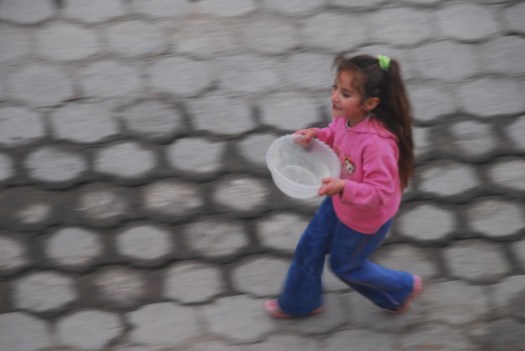We arrived on in Puerto Iguazu after our 17 hour, overnight trip on the fully reclining “luxury” bus. Neither the movies nor the food was better than the regular bus. True to its jungle nature, it was hot and sticky, and we all were in a solid sweat by the time we made it the five or so blocks (yes, we made Terry and Mary Jane walk it … and many many more miles, just ask them) to our hotel. We dropped our things and were quickly informed by Sofie, the owner of Los Troncos (a fantastic place with incredible service! Seriously, we loved it.), that we would not, in fact, be allowed into Brazil without a visa just for the day as we had originally planned. And it turned out, this was kind of a good thing. After all, we only had 24 hours in two half days before we were back on the bus to Buenos Aires.
So we set off to the falls and no sooner had we left the hotel than a thoroughly impressive tropical thunderstorm ensued, leaving us drenched. We felt that no waterfall could compare to the soaking we just received, but we found our way to the bus terminal and we headed off through sheets of water to the park. While the storm had tapered off by the time we got to the park, another waited patiently for us to arrive to the train station before dropping buckets more water. While we began questioning the sanity of our quest, no one thought about turning around.
Our goal for the day was the Garganta del Diablo (Devil’s Throat), a massive bowl of a waterfall, akin to the Canadian Falls of Niagara Falls. The weather had calmed by the time we got off the train and we began our walk across the river (on a platform, there are no Jesus’s here), passing crocodiles, turtles, coatis, birds and fish large and small.
For such a large waterfall, it was oddly quiet. We couldn’t hear it until we were nearly on it, and the cloudy day made seeing the plume impossible (it was much clearer the next day). It was strange to all of a sudden be at such a massive waterfall without the ominous feeling of approaching it. And the experience of standing out on the platform was first, additional soaking, and second, incredible awe at the volume of water moving in front of us.
About then we were told it was time to leave to make it to the park entrance by closing time, and so we called it a day. The next day we returned as the park opened to glorious weather and the upper and lower trails. As you may have guessed, one passes along the tops of the falls, while the other sees more or less the same falls from the bottom. But what you wouldn’t maybe guess is how many falls there are. I forget the all names, but there was water cascading in every direction almost as far as the eye can see. And the jungle trees and green mosses covering everything in sight only added to the ambiance.
My favorite view, if such a thing can be chosen here, was from Isla San Martin, feeling essentially under the largest falls (outside of the Garganta del Diablo) and looking toward the rest.
For those keeping score, Theresa’s favorite was the first overlook of the lower trail (Terry and Mary Jane, feel free to add you favorites!).
By 11 AM we were exhausted but satisfied with our Iguazu experience, and so headed back to make our bus. But here’s a few more photos to enjoy.






















































You must be logged in to post a comment.